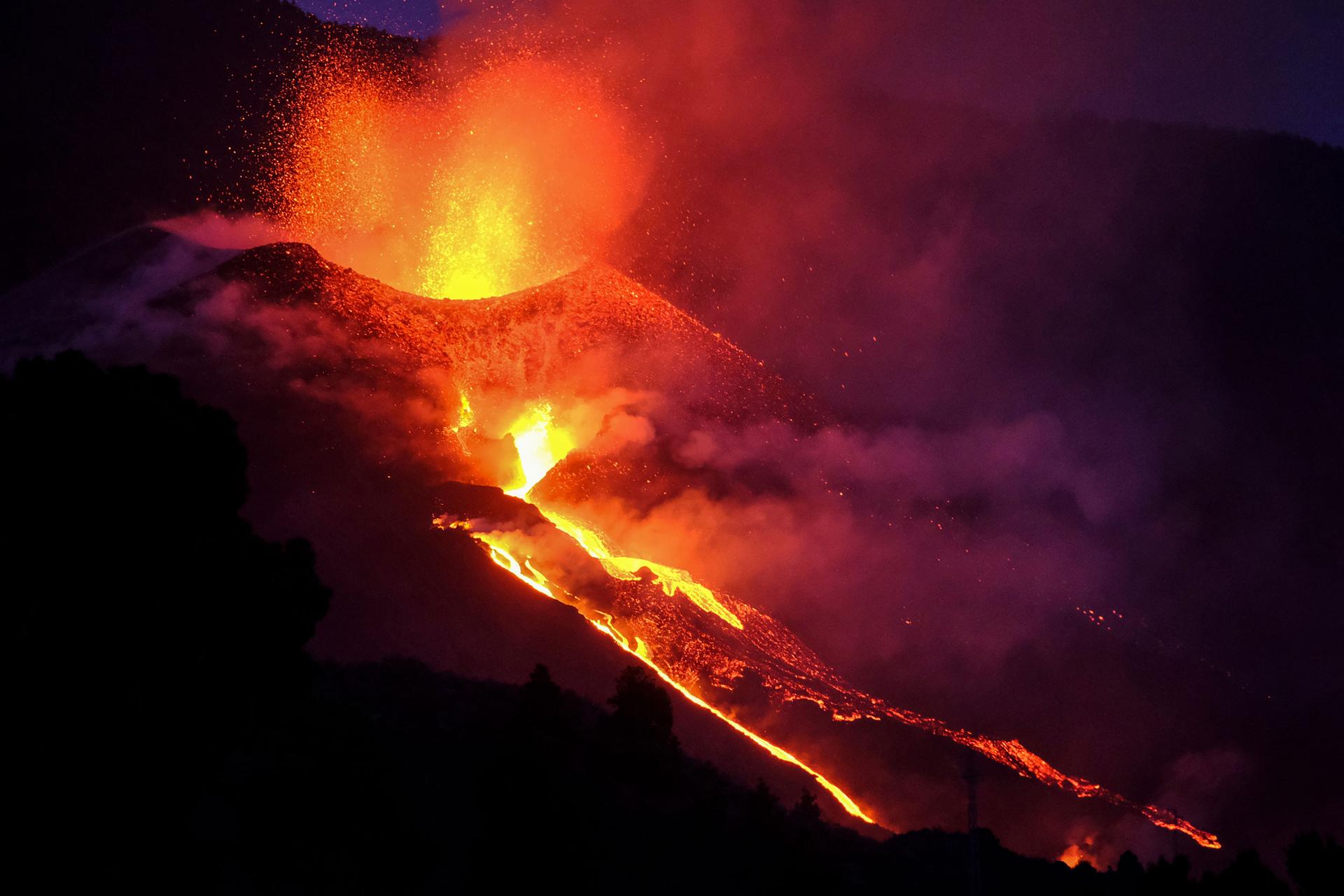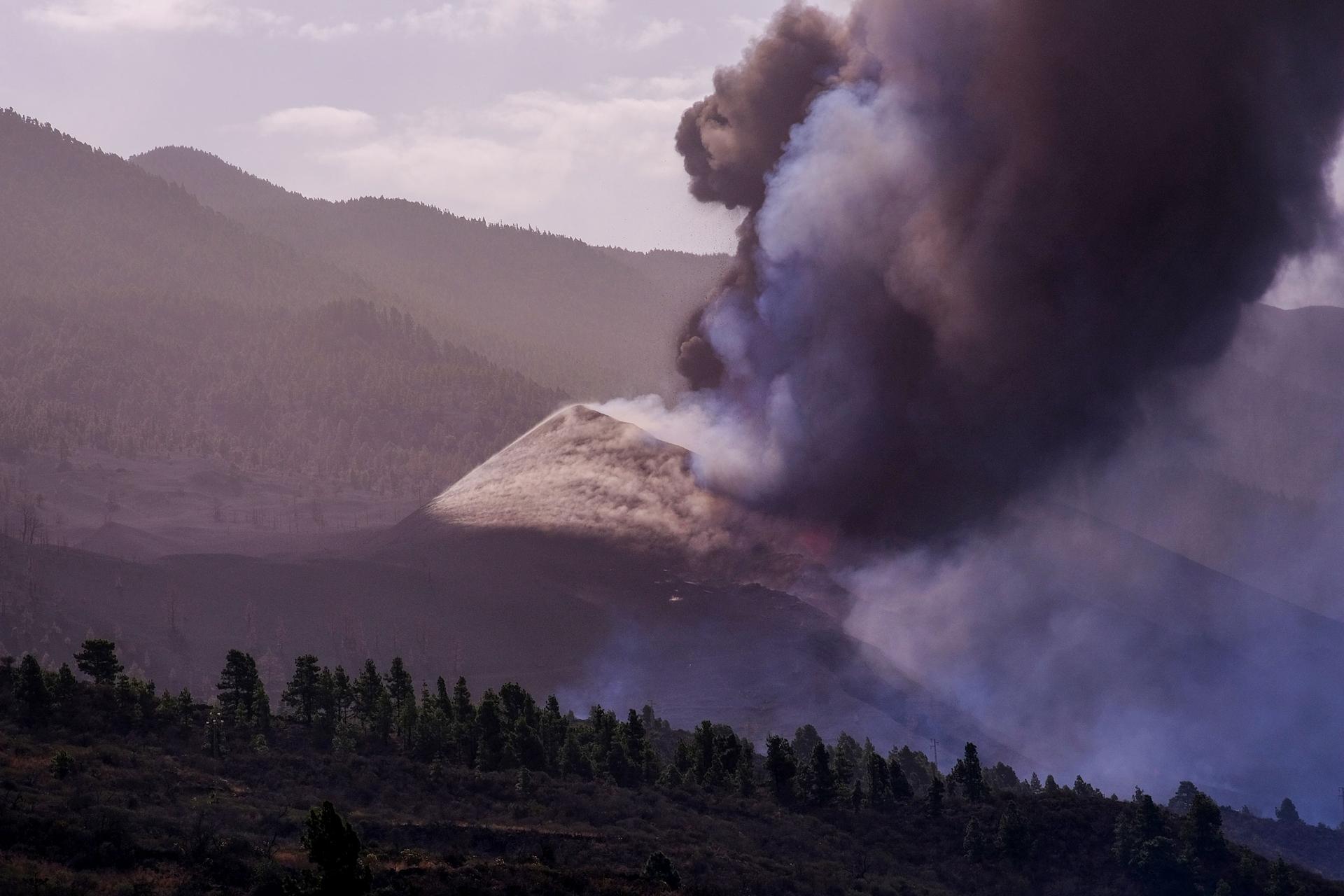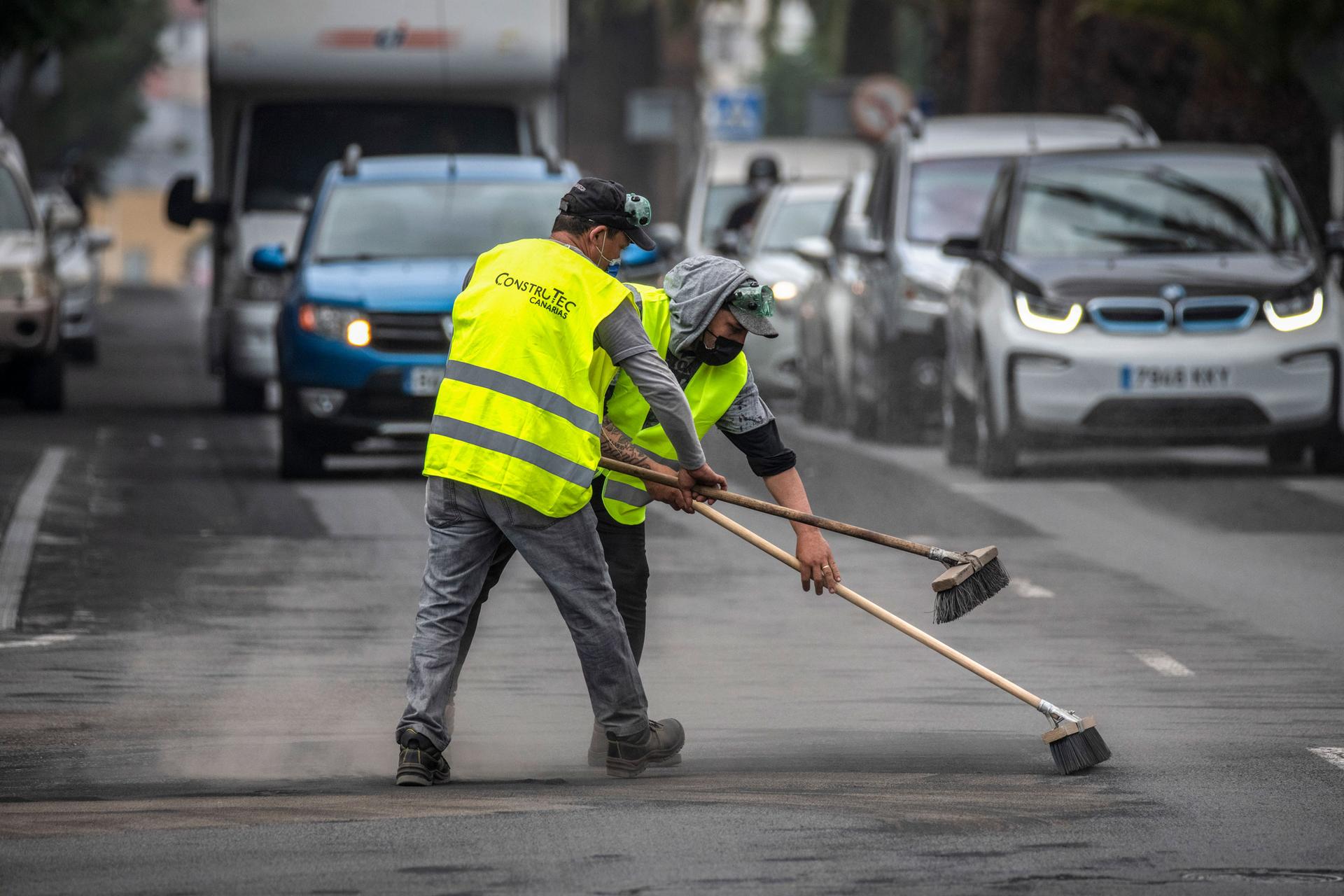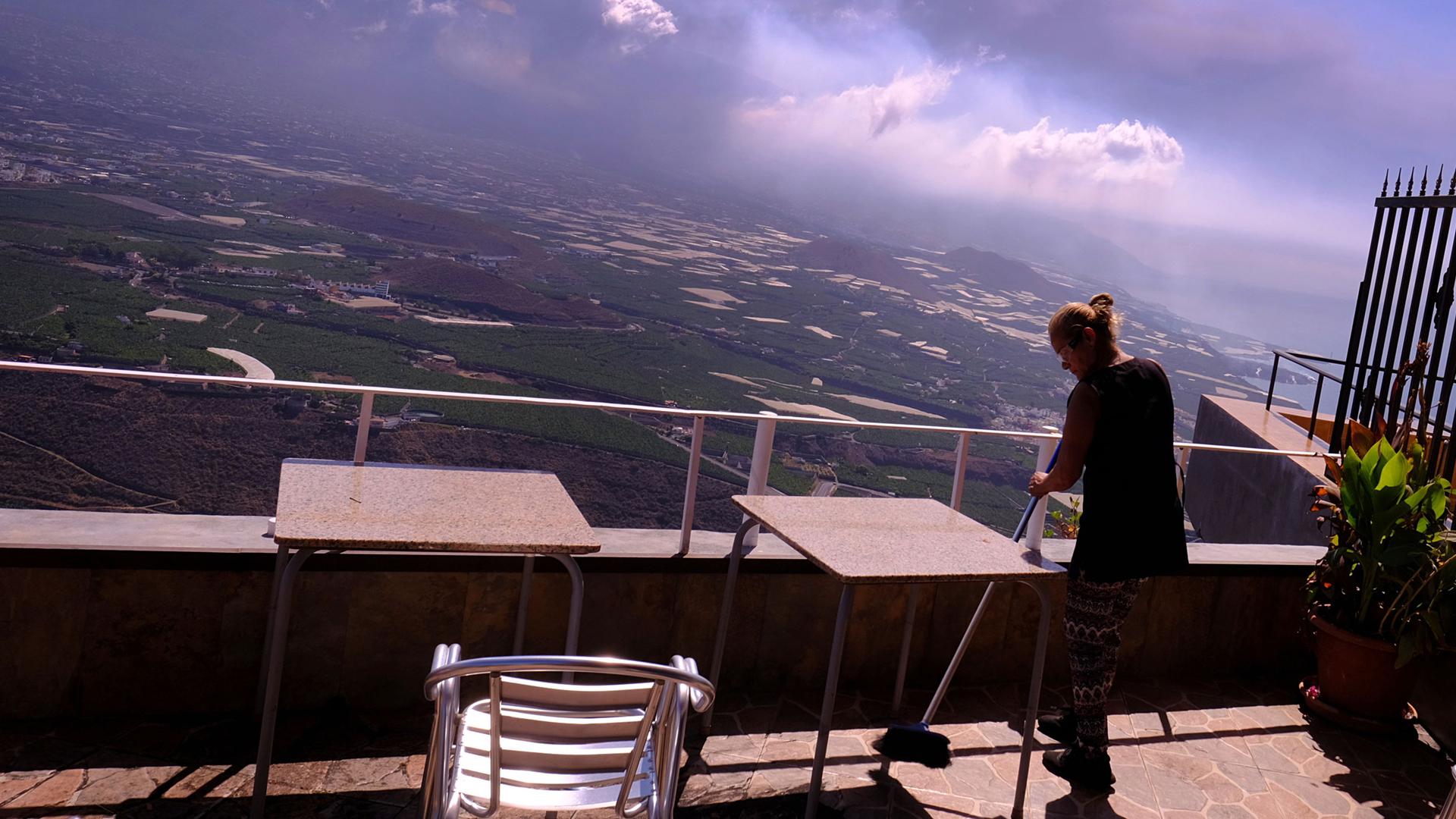It’s been more than two weeks since a volcano began erupting in the Spanish Canary Island of La Palma, leaving residents there worried about the coming weeks and months.
The damage done to La Palma’s infrastructure alone is estimated to be at more than $20 million, according to local authorities.
Over the weekend, Spain’s Prime Minister Pedro Sánchez announced approval for a $239 million recovery plan for La Palma during his third visit to the island since the volcano erupted, Spanish newspaper El Pais reported. These measures will include initiatives to help restore the island’s water supply along with investments in employment, homes, agriculture and tourism, according to El Pais.
Related: Nerves on edge as volcano erupts on island in the Canaries
The Cumbre Vieja volcano first erupted on Sept. 19, and since then, has destroyed more than 900 acres of land and damaged 1,000 buildings — mostly residential.
On Sunday night, part of the volcano cone collapsed, leading to the increased lava flow and causing small underground earthquakes. Geologists anticipate that the flowing lava out of all three vents will eventually merge.
Related: Lava from La Palma eruption finally reaches the Atlantic

About 5,000 people from nearby villages have been evacuated, and more could follow suit.
Last Tuesday, after a week of volcanic activity, the slow-moving lava reached the Atlantic Ocean, flowing down a rocky precipice into the seawater. The merging of seawater and lava created a white cloud that could potentially carry toxic gases.
Hundreds of residents have been ordered indoors as the chemical reaction can irritate eyes, skin and respiratory systems.
Related: Thousands evacuate Congo’s Goma amid renewed volcano threat
The expanding lava is also adding to La Palma’s surface area. More than 40 acres of new landmass has been created by lava swallowing up beaches and flowing into the ocean.
Geologist José Mangas, from the University of Las Palmas in Gran Canaria, spoke on TV last week saying that the island’s topography will undoubtedly change — to the point where maps will need to be updated. He said volcanic eruptions like this one tend to last weeks or months.

Yet, many evacuated residents still don’t know how much they’ve lost. Some of them have businesses, restaurants and stores that rely on tourism which may be affected by the destroyed beaches. Others are agricultural workers who have not been able to pick up their harvest for two weeks.
One banana farmer told local news that while timely evacuations saved human lives, it’s been a catastrophe for many workers.
La Palma is one of the largest banana producers in Spain, exporting 140,000 tons a year and creating 15,000 jobs. The island’s driving economic sector, banana farming makes up 50% of its gross domestic product.
Destroyed farms have led to massive loss of banana crops. Meanwhile, farmers are unable to water their plantations because of broken pipes — resulting in an estimated loss of $32 million.
Videos uploaded to Twitter show workers cutting stalks of bananas as ash rains all around them. They then hurry to blow the ash off the bananas before it works its way in and ruins the fruit.

But as the volcano continues to erupt, solidarity grows.
Hashtags have appeared on social media to encourage Spanish residents to buy more bananas from La Palma and help the local sector.
